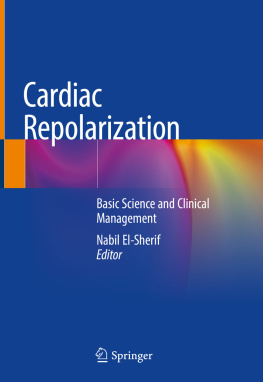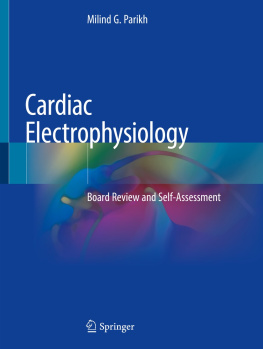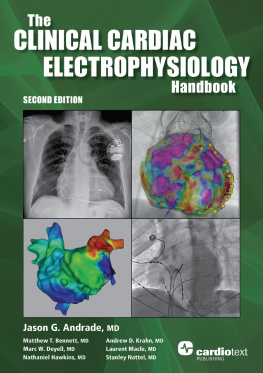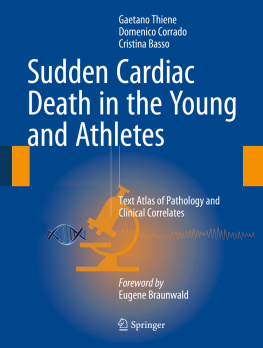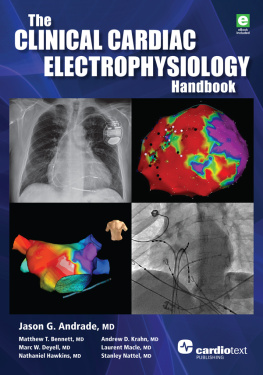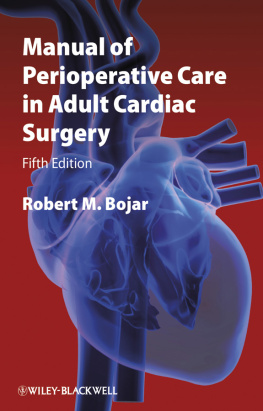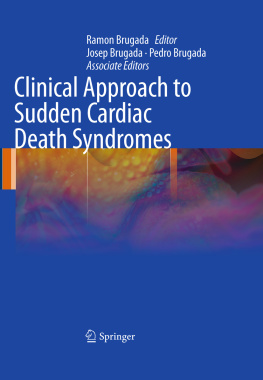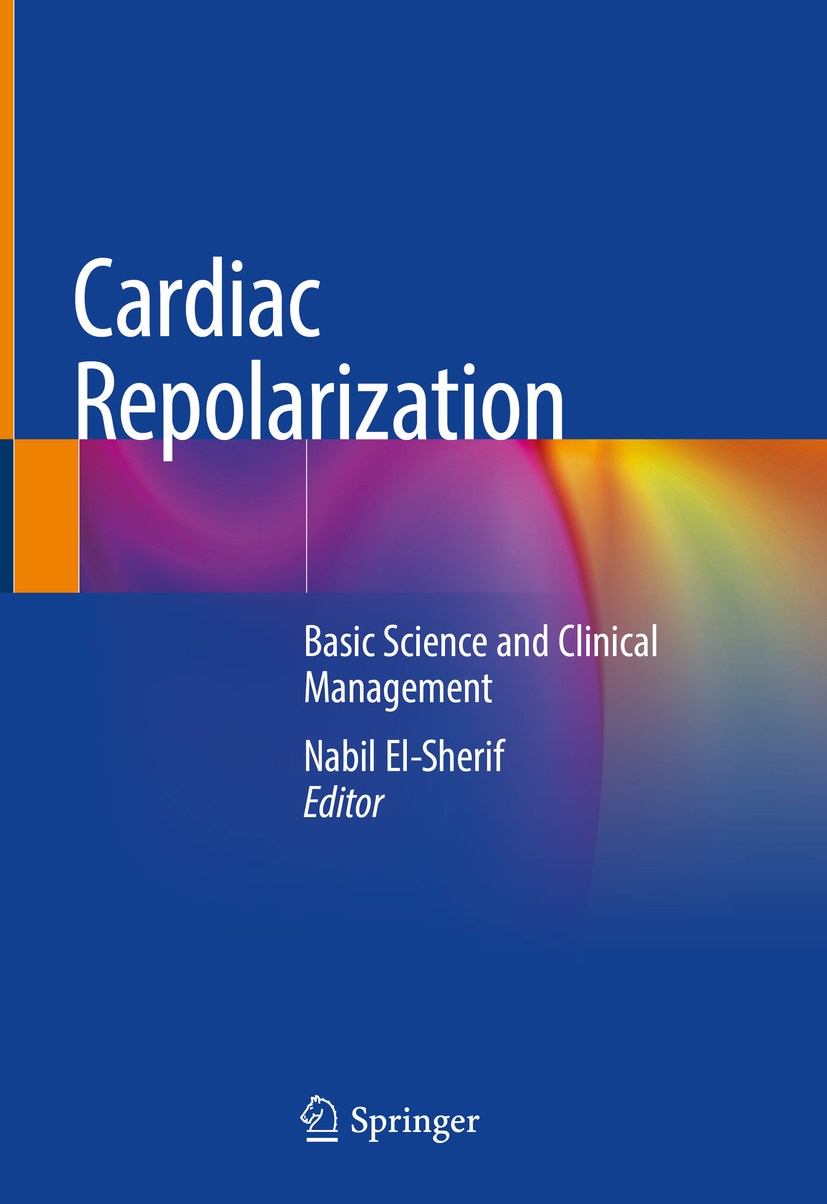Editor
Nabil El-Sherif
Department of Medicine and Physiology, State University of New York Downstate Medical Center, VA New York Harbor Healthcare Center, Brooklyn, NY, USA
ISBN 978-3-030-22671-8 e-ISBN 978-3-030-22672-5
https://doi.org/10.1007/978-3-030-22672-5
Springer Nature Switzerland AG 2020
This work is subject to copyright. All rights are reserved by the Publisher, whether the whole or part of the material is concerned, specifically the rights of translation, reprinting, reuse of illustrations, recitation, broadcasting, reproduction on microfilms or in any other physical way, and transmission or information storage and retrieval, electronic adaptation, computer software, or by similar or dissimilar methodology now known or hereafter developed.
The use of general descriptive names, registered names, trademarks, service marks, etc. in this publication does not imply, even in the absence of a specific statement, that such names are exempt from the relevant protective laws and regulations and therefore free for general use.
The publisher, the authors, and the editors are safe to assume that the advice and information in this book are believed to be true and accurate at the date of publication. Neither the publisher nor the authors or the editors give a warranty, expressed or implied, with respect to the material contained herein or for any errors or omissions that may have been made. The publisher remains neutral with regard to jurisdictional claims in published maps and institutional affiliations.
This Springer imprint is published by the registered company Springer Nature Switzerland AG
The registered company address is: Gewerbestrasse 11, 6330 Cham, Switzerland
Foreword
Normal cardiac repolarization is vital to maintain optimal mechanical and electrical cardiac function. Repolarization that is too long or too short, or otherwise abnormal, puts the patient at risk for developing life-threatening cardiac arrhythmias. It is essential that scientists and clinical electrophysiologists understand cardiac repolarization. The textbook Cardiac Repolarization: Basic Science and Clinical Management , edited by Nabil El-Sherif, provides information critical to that understanding.
Chapter , Neuromodulation of Cardiac Repolarization and Arrhythmogenesis, explores autonomic modulation of this activity at the cardiac channel, cellular, and organ levels.
Heart failure can predispose to the development of potentially fatal arrhythmias via multiple mechanisms including altered calcium handling, stretch, and changes in myocyte electrical and metabolic properties, as explored in Chap. , Cardiac Repolarization and Stem Cells: An Emerging Path Toward Precision Medicine.
Voltage-gated sodium channels, responsible for the rapid upstroke of the action potential, are vital to maintain electrical excitability and coordinate excitation-contraction coupling, as explored in Chap. , Age, Sex, and Racial Differences in Cardiac Repolarization and Arrhythmogenesis, emphasizing that testosterone appears to shorten the QTc interval in males, while in females, there is a more complex interaction between progesterone and estrogen .
With the initial chapters serving as a scientific foundation for clinical events involving repolarization, the text now turns to the clinical arena, beginning with a consideration of the standard electrocardiogram (ECG), still one of the most useful methods for risk stratification for sudden cardiac death, and an analysis of the QT interval, as explained in Chap. , Microvolt T-Wave Alternans: Pathophysiology and Clinical Aspects.
The next several chapters feature clinical manifestations of the long QT interval. Chapter discusses the clinical management of patients with the inherited long QT syndrome, Clinical Management of LQTS Patients, focusing on minimizing the adrenergic response, shortening the QTc, decreasing the dispersion of refractoriness, and improving the function of dysfunctional ion channel .
Chapter , Acquired Long QT Syndrome and Electrophysiology of Torsade de Pointes, stresses the electrophysiological mechanisms of acquired LQTS, its electrocardiographic (ECG) characteristics, clinical presentation, and management of the acquired long QT interval .
New mechanisms of QT prolongation are explored in Chap. , The Role of Inflammation and Autoimmunity in Long-QT Syndrome.
The QTc interval can be too short (<340 ms) as well as too long and provoke ventricular arrhythmias, as discussed in Chap. , The Short QT Syndrome.
A relatively newly described entity, the J-wave syndromes, appears to be a constellation of several clinical entities characterized by J-wave abnormalities, such as the early repolarization syndrome associated with variants in seven different genes, discussed in Chap. , Benign Versus Malignant Early Repolarization Patterns, differentiates benign from arrhythmogenic J waves, emphasizing the J-wave proper, the ST-segment, and the ensuing T-waves .
Brugada syndrome appears to be part of the J-wave group and is discussed in Chap. , Genetic Architecture, Pathophysiology, and Clinical Management of Brugada Syndrome, in which the authors stress the understanding of the pathophysiological mechanism(s), the ongoing efforts to reappraise the genetic architecture, and the advances in risk stratification and therapeutic approaches .
Chapter , the final chapter, Action Potential Dynamics in Human Atrial Fibrillation, explores the action potential variability in the most common sustained arrhythmia that affects more than 30 million people worldwide, atrial fibrillation.
This textbook, ably edited by Nabil El-Sherif and written by him along with a multitude of electrophysiology experts, is a must for basic and clinical electrophysiologists interested in cardiac repolarization.
Douglas P. Zipes
Preface
Cardiac repolarization is a vital aspect for understanding normal cardiac rhythm, and its abnormal modulation is the basis of many potentially lethal cardiac arrhythmias. The last book that dealt exclusively with cardiac repolarization was published in 2003. It is overdue to readdress the many significant changes in the field.
This book was designed to provide a comprehensive up-to-date coverage of clinical and research aspects of cardiac repolarization, with several sections that are the domain of practicing physicians. The 20 chapters are subgrouped into 4 parts. Part I deals with the basic, molecular biology and clinical aspects of cardiac repolarization at large, including the influence of the autonomic system, remodeling in organic heart disease, racial and gender difference in cardiac repolarization and arrhythmic risk, ECG-derived evaluation of cardiac repolarization, and future role of stem cells studies of cardiac repolarization.
Part II provides a comprehensive coverage of pathophysiology, molecular biology, and clinical aspects of long QT syndromes. While basic and clinical aspects of congenital long QT syndrome and torsade de pointes are usually the domain of academic cardiologists and cardiac electrophysiologists, acquired and drug-induced long QT syndrome should be of interest to a majority of medical professionals who prescribe drugs and take care of patients.

